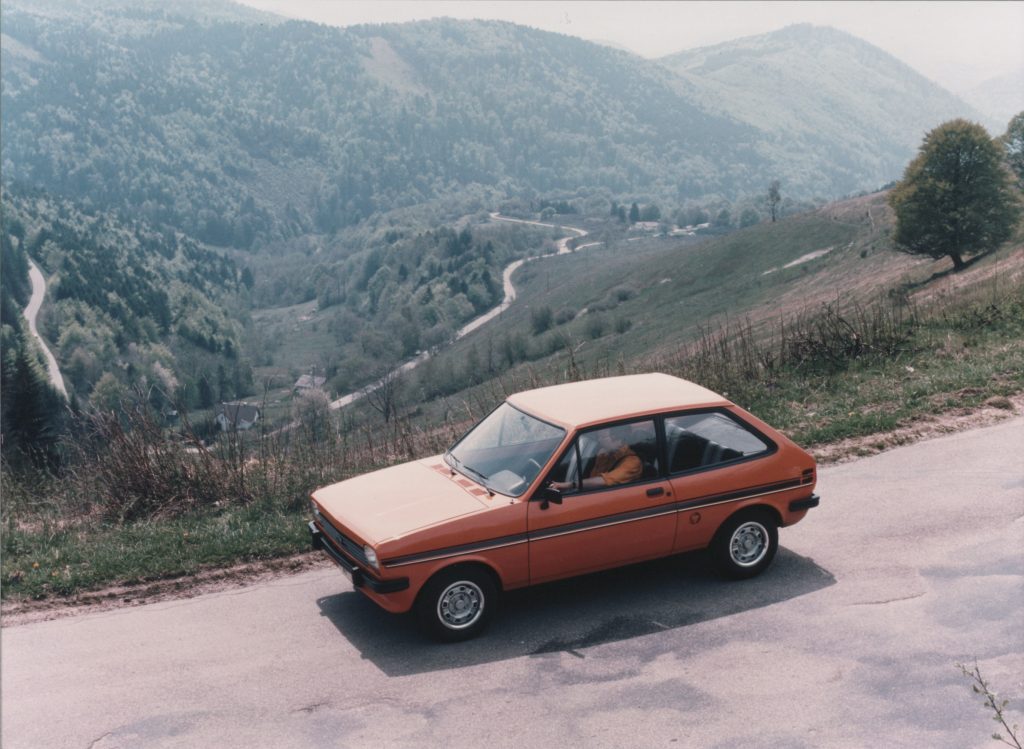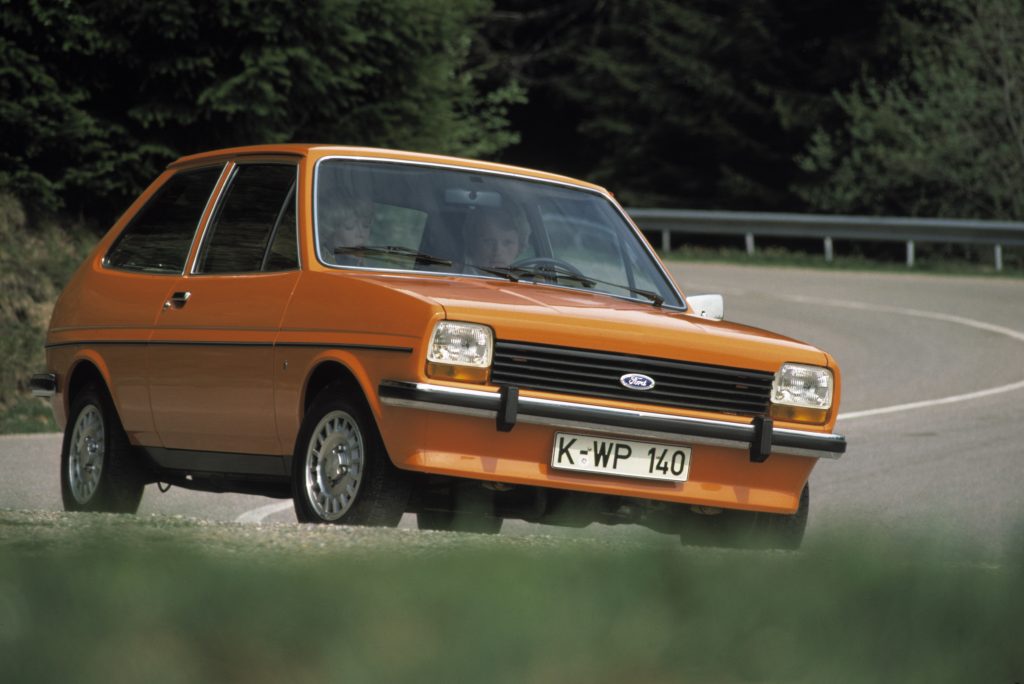Welcome to Freeze Frame, our look back at moments from this week in automotive history.
3 September 1976 – Ford Fiesta launches
“Oh what a beautiful baby!” read the cover to the brochure of Ford’s new small car, the Fiesta, on its launch in 1976.

Until September that year the Escort had for several years been the smallest car in Ford’s lineup, but it was certainly no baby. The mid-1970s had seen several manufacturers introduce new small cars that sat between their family offerings and genuinely tiny models like the Mini and Fiat 126, and Ford was keen to join their ranks.
This new class included 1971’s Fiat 127 and the Renault 5 and Peugeot 104 a year later, each notably using a front-engined, front-wheel drive layout and a hatch, rather than a traditional boot, at the back. They became the first “superminis”, and in little more than a decade came to dominate Europe’s roads, with cars like the Austin Metro, Citroen Visa and the Peugeot 205 among their number.
And, of course, the Ford Fiesta. Known by the codename “Bobcat”, development began in 1972 and Ford leaned heavily on customer clinics, buoyed by the staggering sales of the Mustang in the US, which had proven their worth.
Lee Iacocca, who’d overseen the Mustang project, pitched the brand’s global design studios against each other. Among the candidates was Ghia, the former coachbuilder in which Ford had recently acquired a majority stake, and it was Ghia’s proposal, largely credited to chief stylist Tom Tjaarda, that got the nod.
The car’s mechanicals were less innovative. While the front-engined, front-wheel drive layout was new, the power units were derivatives of the Ford “Kent” engine first seen in the Anglia, albeit renamed Valencia for one of the factories that would produce the new car. Another was Saarlouis in then West Germany – outside which the cars in our lead image can be seen, awaiting delivery just after launch in 1976.
Whether the end product was beautiful or not, as the brochure claimed, was largely immaterial, as the car proved an enormous success. Ford shifted more than half a million after only 14 months, and surpassed a million another 13 months after that.
By 2014, and now six generations down the line, the Fiesta had overtaken the Escort as Ford’s best-selling car in the UK on more than 4.1 million units – though the Escort had of course ended production in 2002.
While the modern Fiesta is a world away from its 1976 predecessor, the basic recipe has changed little and, importantly, the nameplate has remained the same all this time. Throw in Ford’s proclivity for a hot model to draw enthusiasts into showrooms (though 2021’s Fiesta ST – tested here with a Fiesta RS Turbo – makes just shy of four times the power of 1976’s sporty 1.1-litre Fiesta S…) and its enduring popularity comes as no surprise.
Read more
Freeze Frame: The Citroën that saved a president’s life
Is this Capri RS2600 the (homologation) car you always promised yourself?
Future Classic: Ford Fiesta ST










